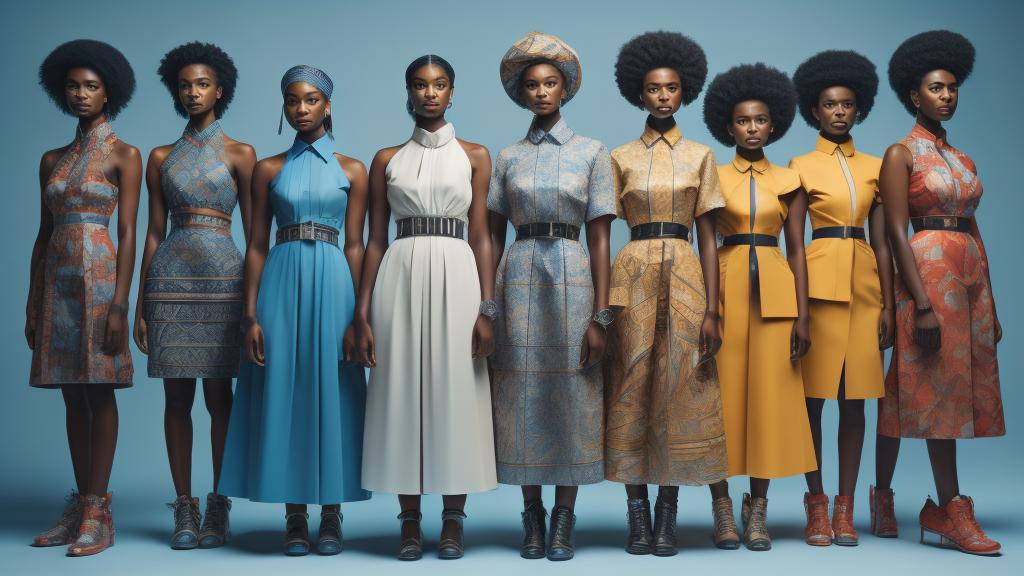In recent years, the conversation around inclusivity in the fashion industry has reached unprecedented heights. More than just a buzzword, inclusivity signals a shift in mindset, prioritizing representation and diversity over outdated ideals. Today, the fashion landscape is transforming dramatically, with brands, designers, and influencers championing movements that celebrate all body types, ethnicities, ages, genders, and abilities. This article explores how the industry is not merely talking the talk but actively walking the walk, embracing inclusivity beyond tokenism.
### Breaking Barriers: The Catalysts of Change
Historically, the fashion industry has been notorious for its narrow standards of beauty, often perpetuating unrealistic and homogeneous ideals. While these ideals are still present, a seismic shift is underway. The digital revolution has emboldened marginalized voices, offering platforms to challenge these norms. Social media, once a tool for showcasing glamorous aesthetics, has become a hotbed for activism and discourse on representation. Influencers and everyday users alike utilize these platforms to hold brands accountable, driving change from the ground up.
Moreover, non-traditional models have become symbols of change, breaking barriers by gracing covers and runways that were once reserved for a singular type of beauty. Icons like Ashley Graham, Paloma Elsesser, and Winnie Harlow have upended the status quo, proving that beauty is not found in a single size or color. These trailblazers have not only shattered glass ceilings but also made seismic ripples within the industry, encouraging brands to reassess their values.
### Stories from the Frontlines: Brands Leading the Way
Some pioneering brands have seized this moment to redefine their platforms, embedding inclusivity at the core of their identities. Brands like Rihanna's Fenty Beauty and Savage X Fenty have become synonymous with diversity and representation. Offering an astounding 50 shades of foundation, Fenty Beauty dismantled industry norms overnight, proving that demand for inclusion extends far beyond tokenism. Similarly, Savage X Fenty's lingerie shows eschew the antiquated Victoria's Secret model, showcasing individuals of various shapes, sizes, and ethnicities.
Equally noteworthy are brands like Chromat and Becca McCharen-Tran, known for creating vibrant designs that cater to a diverse array of people, celebrating queerness, body inclusivity, and gender fluidity. Their runways serve as powerful statements that challenge perceptions, positing fashion as an inclusive celebration rather than an exclusive club.
### The Role of Technology and Innovation
Technology and innovation play pivotal roles in furthering the cause of inclusivity. The rise of virtual fashion shows has allowed for an expanded roster of diverse models to grace global shores, reaching audiences who might not have access to traditional fashion events. Brands like Balenciaga are leveraging cutting-edge technology to create digital avatars, which possess the potential to transcend physical characteristics and represent a form of democratized beauty.
Moreover, augmented reality (AR) tools have empowered consumers to visualize clothing on various body types, thereby addressing the limitations posed by ecommerce's 'one-size-fits-all' approach. This intersection of fashion and technology presents a promising frontier where personalization and diversity can be seamlessly integrated.
### The Challenges Ahead: Ensuring Authenticity and Avoiding Tokenism
While progress is palpable, the journey toward truly inclusive fashion is far from complete. Tokenism remains a significant challenge, with some companies adopting token diversity to capitalize on the movement without a genuine commitment to change. This superficial embrace of inclusivity can erode trust and alienate consumers seeking authenticity and genuine connection.
To avoid falling into the tokenism trap, brands must foster inclusivity across all dimensions, not limiting it to identity-focused initiatives but embedding it within their corporate cultures. Gathering feedback from diverse voices, investing in inclusive design education, and recognizing intersectionality within fashion are steps that can ensure that inclusivity is systemic rather than performative.
### Conclusion: Fashion as a Catalyst for Social Change
The fashion industry stands at a critical juncture, where embracing inclusivity is no longer an option but a necessity. This period of change is an opportunity for the industry to become a true catalyst for social change, shaping cultural perceptions and inspiring other sectors to follow suit. By elevating diverse narratives, championing authenticity, and embedding inclusivity within its very fabric, fashion can lead the charge towards a more equitable and representative world.
In a rapidly evolving landscape where diverse bodies and stories hold symmetrical sway, the symbiosis of fashion and inclusivity promises a more vibrant, resilient, and compelling industry. As witness to this transformative process, we, the consumers, hold the responsibility to demand, support, and celebrate brands making genuine strides towards diversity beyond capitalism-driven tokenism.
The rise of inclusive fashion: how the industry is embracing diversity beyond tokenism

